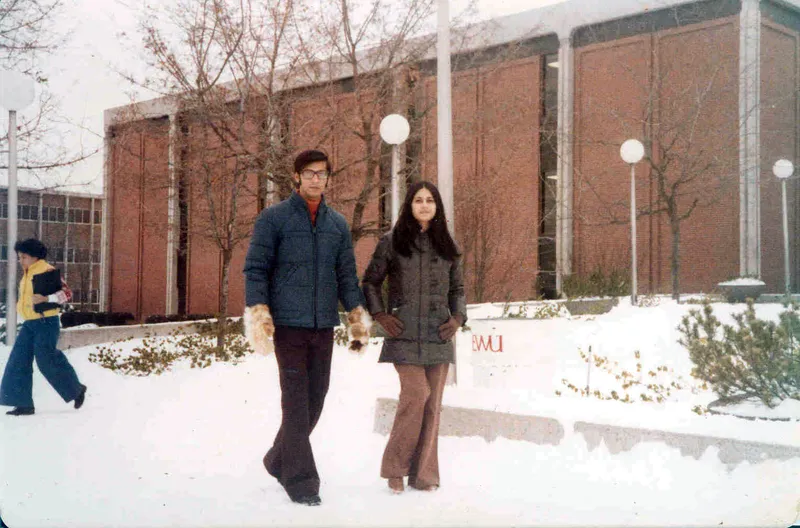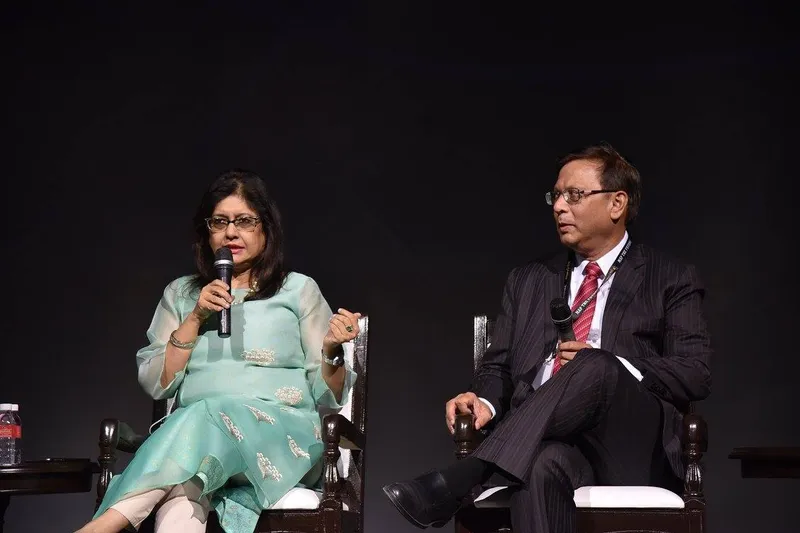How MapmyIndia built a customer-first business around digital maps
"Our idea was clear: we are building a digital map product, and won’t give the IP to anybody. But, we can provide it as a service," said Rakesh Verma, Chairman of C.E. Info Systems.
The investor roadshow was on. There were 80 one-on-one meetings with anchor investors scheduled before the Rs 1,040-crore initial public offering (IPO) of C.E. Info Systems — better known as 'MapmyIndia'.
In meeting after meeting, Rakesh Kumar Verma, Chairman and Managing Director of C.E. Info Systems, heard a key question patiently that he and wife, Rashmi, had discussed at length first in the United States in 1995 — that is three years before Google was born.
Most investors are curious to understand: How will make money off digital maps? The answer has its roots in a conversation between Rakesh and Rashmi in 1994.
The couple had moved back to India in the early 1990s, but travelled to the US periodically. During one such visit, they first came across digital maps.
"It looks cute, but what could be the business out of it?" the couple wondered.
Rakesh had worked in the US for a decade in business functions in companies like EDS. Rashmi had worked as a software developer with IBM. They wanted to build a business in India, away from offshore technology services — a software technology company with a growing client base in India.
"Our idea was clear: we are building a digital map product, and won’t give the intellectual property to anybody. But, we can provide it as a service," Rakesh told YourStory a day before MapmyIndia's IPO opened for investors' bidding.
Rashmi Verma, Chief Technology Officer of C.E. Info Systems, began building the proprietary map database in 1995. Rakesh began looking for clients who would pay for projects that required maps for location-based planning.
"We started thinking and imagining to ourselves—every data that exists will definitely require a location component. We were convinced," Rakesh said.

Rakesh Verma and Rashmi Verma in the winter of 1979.
The MapmyIndia database today has been built through collection and compilation of geo-tagged GPS data, photographs, videos, panoramic 360-degree images, names and other attributes about roads, buildings, places and boundaries.
Its technology team updates the database by collecting and acquiring data through technology-driven professional field surveys, advanced sensors, IoT devices, and platform usage, apart from using professionally crowd-sourced and professionally-authenticated data.
But back in 1995, the founders built the map database based on physical surveys on paper, which Rashmi would digitise into digital maps, and developed measurement tools.
Rakesh's role involved getting permissions and approvals from government officials in ministries of the Road Transport and Highways, Science and Technology, among others, to use the maps.

Rashmi Verma, Co-founder and CTO (from left), Rakesh Verma, Chairman and Managing Director, and Rohan Verma, CEO and Whole-time Director of C.E. Info Systems.
Since then, MapmyIndia has evolved by using technological advancements, like satellite imagery, GPS equipment, mobile mapping, and 360-degree car surveys.
But who would pay for digital maps? In 1996, the founders kept an eye on sectors that were growing and needed vast physical operations: cola companies, telecom.
One of MapmyIndia's early customers was Coca-Cola India, which began its engagement to locate its national network of bottlers. This was important for Coca-Cola India's legal team.
That relationship expanded into geo-locating and mapping its retail network, and then its transport and logistics partners. This was important for Coca-Cola India's distribution and merchandising teams.
Similarly, MapmyIndia's database became important for mobile operators to strategise, based on maps, where their telecom towers needed to be built.
"We realised that there are so many use-cases, and kept developing the map," Rakesh said.
"MapmyIndia is a story that has remained untold for so long," says Sameer Nigam, Co-founder and CTO of PhonePe, which has a 19.15 percent stake in C.E. Info Systems.
"MapmyIndia has three strong points of contact on the revenue front: automotive, consumer tech and digital enterprises, and use-cases in government (forest department). They have cash in the bank, and have been profitable for the longest time," Sameer explains.
In the past decade, applications from PhonePe, Paytm and Ola, to Flipkart and Amazon have built their location-based services on top of the MapmyIndia database.
In terms of total income, C.E. Info Systems has grown 5.6 percent on a compounded basis in three years to Rs 192.3 crore, with profits growing 21 percent in the same period.

Rashmi Verma (left) and Rakesh Kumar Verma, Founders of C.E. Info Systems.
The revenue is based on an active client base of 500 enterprises. However, MapmyIndia depends on a limited number of customers for a significant portion of its revenues.
The number of customers that accounted for 80 percent of MapmyIndia's revenue from operations were 17, 22, 25 and 18 in FY 2019, 2020 and 2021 and in the six month period ended September 30, 2021, respectively, according to its red herring prospectus.
The management led by Rohan Verma, Chief Executive Officer of C.E. Info Systems, will have to increase the revenue per enterprise customer in the long tail, while reducing the dependence on its top 10 accounts.
The revenue from operations is classified under 'map and data products' and 'platform and IoT (internet of things) products'. Operational revenue from map and data products (Rs 60.78 crore, or 40 percent of FY 2021 revenue) is based on enterprises in sectors like automotive that deploy the map database as a service.
The platform and IoT products segment accounted for 60 percent of operational revenue — or Rs 91.69 crore — in FY 2021.
Its IoT platform, ‘InTouch’, have applications like near real-time vehicle and asset tracking for fleet, transport and logistics management. "These are essentially the APIs (application programming interface) we are giving to PhonePe, Grofers and Paytm," Rakesh says. "It is more transaction-based revenue."
MapmyIndia's software platform, 'Workmate', enables workforce and workflow management, monitoring and automation capabilities.
The company has an employee base of 754 employees, as of September 30, 2021, down from 911 in FY 2019.
C.E. Info Systems has almost halved its 'non-permanent employees' from 600 in FY 2019 to 334 in September 2021. As a consequence, its total employee expenses decreased from Rs 64.27 crore in FY 2020 to Rs 53.95 crore in FY 2021
Many of the non-permanent tasks involved working out on the field, Rakesh says, adding that MapmyIndia will seek to automate many of the field functions.
More worrying, its expenditure on R&D activities came down to Rs 76 lakh in FY 2021 from Rs 91.7 lakh in the previous year. For the six months ended September 30, 2021, it has spent 52.3 lakh, according to C.E. Info Systems' red herring prospectus.
Rakesh Verma says the COVID-19 pandemic required many such measures to be taken. While MapmyIndia is a technology company at heart, it has always been customer-first, he adds.
That's how C.E. Info Systems grew in its first 12 years before funding from external investors. And that is why it is now ready to be listed on India's national stock exchanges.
Edited by Rajiv Bhuva








![[App Friday] Finch’s gamification of self-care is a hit and a miss](https://images.yourstory.com/cs/2/f49f80307d7911eaa66f3b309d9a28f5/Finch-1655391957378.png?mode=crop&crop=faces&ar=1%3A1&format=auto&w=1920&q=75)
